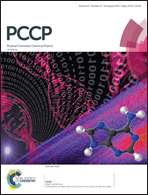Electrical transient laws in neuronal microdomains based on electro-diffusion
Abstract
The current–voltage (I–V) conversion characterizes the physiology of cellular microdomains and reflects cellular communication, excitability, and electrical transduction. Yet deriving such I–V laws remains a major challenge in most cellular microdomains due to their small sizes and the difficulty in assessing voltage with high nanometer precision. We present here novel analytical relations derived for different numbers of ionic species inside neuronal micro/nano-domains, such as dendritic spines. When a steady-state current is injected, we find a large deviation from the classical Ohm's law, showing that the spine neck resistance is insufficient to characterize electrical properties. For a constricted spine neck, modeled by a hyperboloid, we obtain a new I–V law that illustrates the consequences of narrow passages on electrical conduction. Finally, during a fast current transient, the local voltage is modulated by the distance between activated voltage-gated channels. To conclude, electro-diffusion laws can now be used to interpret voltage distribution in neuronal microdomains.



 Please wait while we load your content...
Please wait while we load your content...